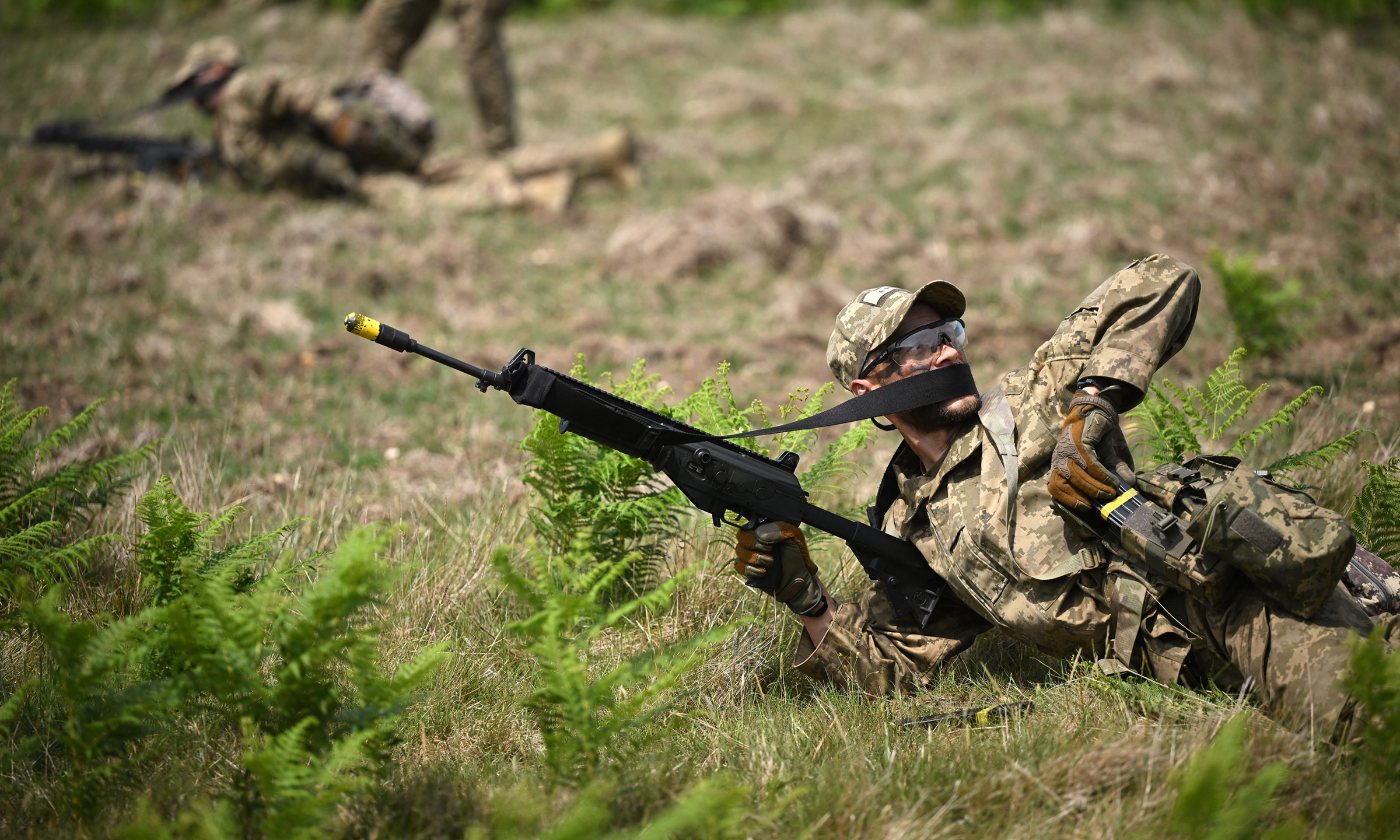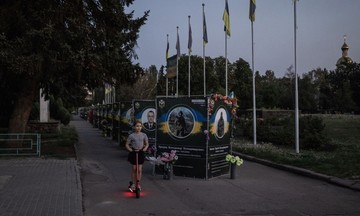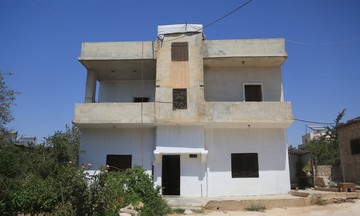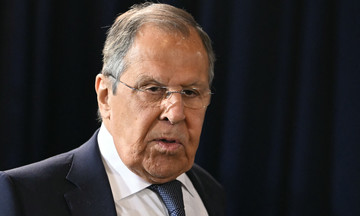Andriy Kovalov, a spokesperson for the Ukrainian Armed Forces General Staff, stated on 12/8 that Ukrainian forces "are implementing effective measures to stop the enemy's advance on the Dobropillia and Pokrovsk fronts." This statement followed a Russian advance of over 10 km after breaching Ukrainian lines.
Ukraine deployed several elite units to the area, including the 93rd Separate Mechanized Brigade, the 12th "Azov" Brigade, the 4th "Rubizh" Brigade of the National Guard, and the 1st and 25th Assault Battalions, to stabilize the situation and prevent further Russian gains.
However, experts warn this could create new vulnerabilities in Ukraine's Donetsk defenses and highlights a critical issue: Kyiv's manpower shortage for holding defensive positions.
 |
Ukrainian soldiers during training in eastern England in June. Photo: AFP |
Ukrainian soldiers during training in eastern England in June. Photo: AFP
Michael Kofman, a military expert at the Carnegie Endowment for International Peace, explains that Russia's superior numbers are a key factor in their recent Donetsk advances.
"The Russian thrust near Dobropillia reveals a widespread problem for the Ukrainian military: a lack of cohesive defensive lines and undermanned units struggling to hold ground. This leads to a slow-changing battlefield with the potential for sudden breakthroughs," Kofman assesses.
Kofman describes this period as the "most difficult time" for the Ukrainian military since the conflict began. He notes that while Ukraine addressed ammunition shortages in mid-2024, manpower and training deficiencies remain major obstacles.
Simon Schlegel from Crisis Group points out that the troop ratio between Russia and Ukraine in some areas reaches 10:1, often overwhelming Ukrainian units.
Desertion is a major contributor, with almost 108,000 cases recorded from 1/1 to 30/6, according to the Ukrainian Prosecutor General's Office. This significantly surpasses the 22,000 cases in 2023 and 9,000 in 2022. Only 1,807 soldiers returned to service through legal proceedings. Many Ukrainian soldiers abandon their posts due to exhaustion, lack of weapons, harsh conditions, and dissatisfaction with commanders' orders.
Andriy, an artillery commander near Chasov Yar, reports his unit hasn't received reinforcements for months, while soldiers are exhausted after three years of continuous fighting. Ukrainian military ombudsman Olga Reshetylova emphasizes the declining mental health of soldiers, contributing to increased desertions.
Ukraine's recruitment efforts face obstacles. Initial patriotic fervor brought hundreds of thousands of volunteers. However, by 2024, this source dried up, forcing Ukraine to rely on mandatory conscription.
Ukraine has around 3.7 million men of military age, but only around 200,000 were mobilized in 2024, far below the target. Recruitment campaigns face criticism for coercive tactics like seizing men on the streets and sending them directly to training centers. Videos circulating online show recruitment officers using various methods to apprehend men, increasing public discontent.
Ukrainian youth apprehended by recruitment officers in Kyiv, October 2024. Video: X/hdromaske
A summer 2024 survey by the Razumkov Centre revealed that 46% of Ukrainians believe "there is nothing shameful in evading military service," reflecting shifting public attitudes.
Ukraine amended conscription laws to address this. In 5/2024, the mandatory conscription age was lowered from 27 to 25, expanding the pool by hundreds of thousands. However, President Volodymyr Zelensky rejected proposals to lower it to 18, citing future demographic risks. Instead, Ukraine launched an incentive program for 18-24 year-olds, offering a 1 million hryvnia (24,000 USD) bonus, mortgage assistance, and free higher education.
Last month, Zelensky signed a law allowing those over 60 to sign military contracts, subject to commander approval and a two-month probationary period, aiming to leverage the experience of older veterans.
However, analyst Keir Giles from Chatham House argues that relying on older individuals could exacerbate training and fitness issues, with the average age of Ukrainian soldiers already at 43.
The new conscription laws face political controversy and implementation challenges. Experts suggest lowering the conscription age and including those over 60 doesn't address the core issues of training quality and morale.
According to Euromaidan Press, many recruits receive only 20 days of training before deployment, resulting in low combat effectiveness and high casualties. Schlegel notes this creates a negative cycle: inexperienced recruits suffer casualties, further straining the recruitment system.
Coercive measures, like barring men aged 18-60 from leaving the country and increasing penalties for draft evasion, also trigger public backlash.
 |
Wounded soldiers from the Ukrainian 93rd Brigade in Donetsk on 4/8. Photo: AFP |
Wounded soldiers from the Ukrainian 93rd Brigade in Donetsk on 4/8. Photo: AFP
Manpower shortages force Ukraine into patchwork defenses, with commanders constantly shifting elite units between fronts to counter Russian attacks.
"The 93rd Brigade withdrew from Predtechyne on the Konstantinovka front, and the village fell immediately afterward. The Azov Brigade also left Shcherbynivka, west of Toretsk, now largely under Russian control, putting immense pressure on remaining Ukrainian units," reports AMK Mapping, an open-source intelligence tracker on X.
Experts believe Ukraine prioritizes defending Dobropillia, leaving Konstantinovka vulnerable.
"Manpower shortages force Ukraine to pull troops from key defensive lines to plug the most dangerous gaps, preventing wider Russian breakthroughs. This is when Russia launches attacks on the weakened areas. It's a strategy to probe and stretch Ukrainian lines, preventing them from maintaining a cohesive defense," warns AMK Mapping.
Phong Lam (ISW, Euromaidan Press)












